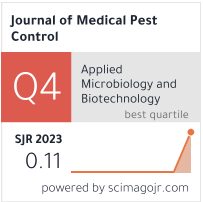Atypical Presentation of Molluscum Contagiosum Mimicking Basal Cell Carcinoma in a 60-Year-Old Female: A Case Report
Abstract
Molluscum contagiosum (MC) is a common skin infection caused by the molluscum contagiosum virus (MCV), a member of the family Poxviridae. It commonly affects the face, trunk, extremities and genetalia. However, involvement of other anatomical locations might be observed rarely. Clinically, it presents as small, dome-shaped, pink-colored, waxy papules, typically 1–5 mm in diameter, with a hallmark central umbilication. While most cases occur in children and immunocompromised individuals, atypical forms may arise in various populations, sometimes mimicking neoplastic skin lesions (such as basal cell carcinoma (BCC) and squamous cell carcinoma) or other dermatoses. These unusual presentations can pose significant diagnostic challenges, particularly in older adults where clinical suspicion for malignancy is heightened and histopathological evaluation is required. While diagnosis is typically clinical, based on lesion morphology, histopathological examination reveals characteristic molluscum (Henderson–Patterson) bodies—large eosinophilic cytoplasmic inclusion bodies within keratinocytes above the stratum basale, with nuclei displaced peripherally. This report aims to highlight the importance of considering MC in the differential diagnosis of solitary and atypical skin lesions, emphasize the role of biopsy and histopathological evaluation, and contribute to existing literature on the diverse clinical morphologies of this skin infection.
Full text:
PDFReferences
RAYA MARJI *, RUBA F.AL-SHEYAB, NADEEN AL-SHAR’E



